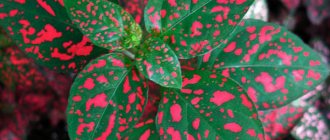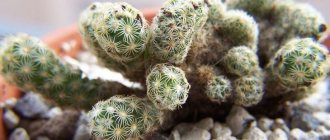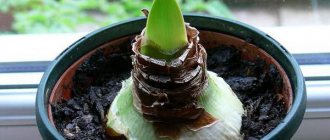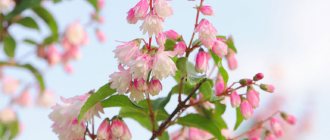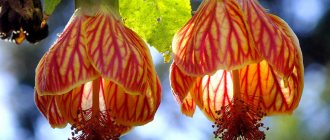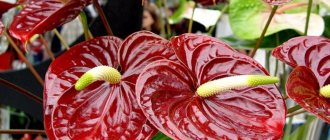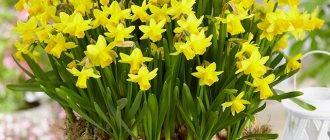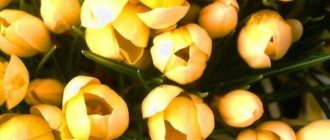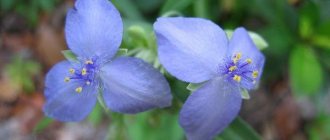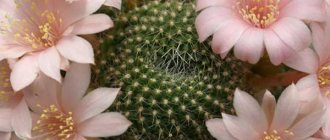Celosia belongs to the Amaranthaceae family. And its inflorescences are compared to a blazing fire (that’s why the flower was called “celosia”, translated from Latin as “blazing”). In nature, these flowering annuals and perennials are found on the African and American continents, as well as in Asian countries. In total, more than 55 species are known.
Celosia belongs to the Amaranth family
This plant is heat-loving, so while in warm regions celosia can be grown as a perennial, in colder regions it grows as an annual flower.
Flower growers value these flowering plants for the beauty and brightness of their inflorescences, which can take the form of combs or small bunches.
Flower growers value celosia for the beauty and brightness of its inflorescences.
Botanical description of celosia
Since these flowers cannot withstand air temperatures below 0⸰C, in most Russian regions these plants are grown as annuals. The stems of celosia are erect, well branched, the foliage is alternate, its shape can be ovate, ovate-lanceolate or linear-lanceolate. The flowers are small and can be collected in inflorescences of the following shape:
- spicate;
- comb;
- paniculata.
The colors of the petals are very diverse: from yellow and golden to orange and scarlet, as well as red or pink. The fruits are capsules in which many small seeds ripen.
Diseases and pests
With excess moisture, celosia seedlings are affected by fungal diseases. The most common disease that develops is called “black leg.” It causes the stem to turn black at the base, which leads to the death of the entire flower. If a seedling gets sick with blackleg, pull it out without sparing it. And to save the remaining seedlings:
- Dry the soil.
- Loosen it.
- Pour in infusion of onion peels or garlic.
- Sprinkle crushed charcoal or ash on top.
Sometimes celosia seedlings are attacked by spider mites or aphids. Spraying the seedlings with a solution of laundry soap helps save it. The use of insecticides is very effective. The second treatment of plants is carried out a week after the first.
How to grow celosia from seeds (video)
We also recommend reading:
16 most popular indoor plants Physalis: description of species and varieties, technology for growing from seeds Spruce in landscape design: the best ornamental varieties and characteristics of cultivation Kalanchoe: description of types and characteristics of care at home
Origin
The flower belongs to the Amaranthaceae family, which includes over 60 different plant species, which mostly grow in the southern hemisphere of the planet. Most of them were bred artificially, by crossing existing species.
In this way, it was possible to obtain species that can tolerate cold well.
Decorative types of celosia
The most famous variety of decorative celosia is silver celosia, which includes paniculate and pinnate types of these flowers.
Celosia pinnate (paniculate)
This variety of celosia can reach 0.9-1.0 m in height, but there are also miniature varieties. The foliage of this species can be bright emerald, pink or scarlet. And the color of small flowers can vary from orange to various shades of red.
Celosia pinnate (paniculate)
Celosia comb (cockscomb)
This flower is known among gardeners as “cockscomb”. The height of the peduncle can reach 0.5 m, but smaller specimens are also found. The color of foliage in different species can be emerald, dark red, golden or bronze in tone. The inflorescences are bright scarlet in color, and in shape they are simply comb flowers.
Celosia comb (cockscomb)
Celosia spica
This spectacular, magnificently decorative beauty compares favorably with its “brothers”, so it will look great in a flowerbed among other flowers. Its stems are straight, often grow together, very strong, and can grow up to 0.7-0.8 m in height. A beautiful fluffy pink tuft grows on each top of the stem. Panicles retain their decorative effect for a long time, not only in flower beds, but also in dry bouquets (in this case they can stand in a vase all winter).
general information
Celosia are beautiful ornamental shrubs with very bright, large and voluminous inflorescences of various shapes. The leaves are just as varied - linear, lanceolate, ovate, green, red and bronze. It is not surprising that summer residents are so fond of celosia.
Depending on the variety, the bushes grow by an average of 50-100 cm. Among them there are perennial varieties, but they do not tolerate frost and can grow for years only in indoor conditions. Otherwise it is a showy seasonal annual that blooms from June to September.
Photo: domashniecvety.ru
Popular varieties of celosia
Among the most popular celosia varieties among flower growers, the most common ones should be noted. And we also need to tell you more about them.
Pampas Plume
This compact, pyramidal-shaped plant features paniculate inflorescences that are larger than other varieties with similar flower shapes. Pampas Plum is very thermophilic and light-loving; this should be kept in mind when choosing a place to plant it. It is valued by gardeners for the original beauty of its inflorescences and highly decorative foliage.
Kimono
These are superminiature bushes, the height of which does not exceed 14-15 cm. The inflorescences are densely double, paniculate in shape. Their color can be red, burgundy, orange, yellow or cream. Flowering of the Kimono variety begins in early July, and the last flowers appear at the end of September.
The plant is thermophilic , so it blooms well in sunny places protected from drafts and wind, and the soil must be fertile. This variety is used in group plantings and for growing in compositions in flower beds.
Celosia Kimono
Peacock
This annual is of medium height (stems grow up to 0.5-0.6 m in height), the shoots are ribbed, succulent, the foliage is bright emerald.
The inflorescences are paniculate in shape, the color of the flowers ranges from orange and yellow to red. It is better to grow in open ground in well-lit areas that are protected from gusts of cold wind. And the soil in the flower beds should be well fertilized. Flowering time is from early July until the first frost.
Cherry coral
This variety belongs to the comb varieties of celosia. Comb inflorescences bloom in mid-summer and bloom almost until the cold weather. The shades of flowers are juicy and bright, which is why Cherry Coral is used to decorate flower beds and ridges.
Celosia Cherry Coral
Empress
These flowers have erect, thick shoots that can reach a height of up to 0.48-0.5 m. The inflorescences are comb-shaped, quite dense, and the color is dark red. The foliage is dark emerald. The first buds appear in the first ten days of July , and the last ones begin to fade with the onset of cold weather.
Celosia Goldfeder
Goldfeder
These low-growing bushes attract attention with beautiful bright panicles-inflorescences of a golden hue. They are planted in flower beds and striped lawns. Flowering occurs from early June to early October. The flowers stay on the bushes for quite a long time.
Tomsoni Magnifica
This variety of pinnate celosia has an unusual color of foliage and stems - pink with a green tint, inflorescences are pyramidal in shape, and the color of the flowers is burgundy. Looks impressive in group plantings and flower beds. Inflorescences have effects in dry bouquets, where they can remain all winter.
Common mistakes when growing seedlings
The main violations in the process of growing celosia seedlings include:
- Improper seed storage. They should not be placed in a hot or humid place. The optimal storage temperature is considered to be +15°C, humidity not higher than 50%.
- Ignoring the rules for preparing seeds and soil.
- Thickened planting.
- Install containers in a cool, dimly lit place.
The beauty of the flowers and the long flowering period increase the popularity of celosia every year. It is enough to grow flower seedlings once, and it will take a place in the front row of any flower arrangement. And in winter it will decorate the house in the form of colorful dried flowers.
Gallery: celosia (60 photos)
Growing celosia from seeds at home
Since all types of this plant are heat-loving, in most regions of our country, before planting it in open ground, it is necessary to grow seedlings from seeds at home (and this is practically the only way to propagate celosia).
The seeds are first kept for several hours in a glass of water to which Epin and Zircon are added. This is necessary in order to soften the hard shell of the seed.
Seeds should be sown in the third ten days of March or in the first ten days of April in containers filled with a mixture of humus and vermiculite (in a ratio of 1:1). You should not sow thickly; the seed material is not sprinkled with anything on top, only lightly pressed into the soil, and sprayed on top from a spray bottle.
Preparing for sowing
The plant can be propagated by cuttings, but in this case many of its decorative qualities are lost. At the same time, the procedure is quite complicated for novice flower growers. Therefore, it is impossible to do without growing strong, healthy seedlings.
To do this, it is necessary to carry out all agrotechnical measures: selection and preparation of seeds, containers and soil.
Seed selection
Celosia seeds can be purchased at flower shops. You must carefully read the name of the variety and information about its characteristics. To obtain vibrant color combinations, it is better to purchase a seed mixture.
Another option is to collect the seeds yourself. To do this, cut off several wilted inflorescences and place them in a dry, warm place. After complete drying, carefully shake out the seeds onto paper. Can be stored in a cardboard box for 2-3 years.
Seed preparation
To protect plants from fungal diseases and blackleg infection, the seeds are disinfected in a pale pink solution of potassium permanganate. The procedure time is 15 minutes.
Then the planting material is placed for 15-20 minutes in a solution of Epin or Zircon. These are growth stimulants, due to which the percentage of germination increases.
Soil selection
To grow seedlings, use soil with neutral acidity. Soil can be purchased at the store; a universal soil mixture for seedlings is suitable.
You can also prepare the substrate yourself. To do this, mix humus, sand, vermiculite and turf soil in a ratio of 1:1:1:3.
Before use, the soil is disinfected in the oven for 20-30 minutes at a temperature of 70-90°C. This procedure reduces the risk of infections and destroys insect larvae and eggs.
Selection of capacity
Celosia requires small containers 8-10 cm high. Plastic and wooden boxes, food containers, special pots for seedlings, peat cassettes and tablets can be used as containers for sowing.
It is important to understand that when choosing a common container, seedlings in the future will have to be planted in separate containers.
Before planting, the container should be prepared: drainage holes are made at the bottom to drain water to avoid rotting of the root system.
Timing and technology for planting cellosia seedlings in open ground
You should not rush to plant grown strong seedlings in open ground - you should wait until the spring frosts have passed, and only then place the young plants in a permanent place in the flower garden. Typically, in most regions, the time for planting celosia seedlings is the second or third ten days of May.
The place for planting seedlings should be sunny, protected from the wind, and the beds should have drainage. A place where groundwater comes too close to the surface of the earth is absolutely unsuitable for planting these flowers.
The soil should have a neutral or slightly alkaline reaction ; in acidic soils, lime or chalk should be added before planting. Fresh organic matter cannot be added before planting these flowers, because these flowers do not tolerate it.
It is better to transplant seedlings into planting holes using the transshipment method so that the plant can better withstand the adaptation process in a new place. The best thing is to grow seedlings at home in separate peat pots, with which the seedlings are subsequently planted in open ground.
The distance between miniature varieties in a row should be at least 18-20 cm, and between tall specimens - about 30 cm.
It is better to transplant seedlings into planting holes using the transshipment method so that the plant can better withstand the adaptation process in a new place
Sowing work
The process of sowing celosia seeds is as follows:
- Drainage is placed at the bottom of the container. For this, expanded clay, perlite or pebbles are used. The drainage layer is 1.5-2 cm.
- The soil is packed tightly into the container. Do not add 2 cm to the top.
- The soil is moistened with a spray bottle.
- Seeds are evenly distributed on the soil surface at a distance of 2-3 cm, without deepening them into the soil.
- Gently press the planting material to the ground. You should not sprinkle the seeds with soil, since the sowing of celosia is superficial.
- Moisten the crops using a spray bottle.
- Cover the container with a lid or film to create a greenhouse effect.
Crops are harvested in a warm, bright place. The optimal temperature for seed germination is +22-25°C.
Before the first shoots appear, the greenhouse is ventilated daily. To do this, open the lid or film for 30 minutes. Condensation from the surface of the shelter is wiped with a dry cloth.
Features of caring for indoor celosia at home
Indoor celosia is not a very capricious indoor flower. The main thing is to provide her with sufficient lighting, which should not be bright, and direct sunlight should be diffused using tulle or other material. In the room where the flower stands, it is better to maintain the temperature within 15-16 degrees, and if it rises to 20 degrees, the room should be ventilated more often.
Water for irrigation should be filtered and at room temperature. When watering, you need to make sure that drops of water do not fall on the buds. The soil in the pots should be moist, but not waterlogged. Periodically, celosia foliage is sprayed with a spray bottle.
Wintering
Celosia is not able to survive even mild frost, even with shelter. Therefore, there is no point in wasting time on warming the plant in autumn: it is better to collect flower seeds and grow new celosia in the flowerbed of your site in the spring.
The main difficulty in growing wildflowers is the process of seed germination. Having dealt with it and ensuring proper planting and care of celosia in the future, the gardener will receive a completely undemanding plant that pleases the eye with long and abundant flowering.

